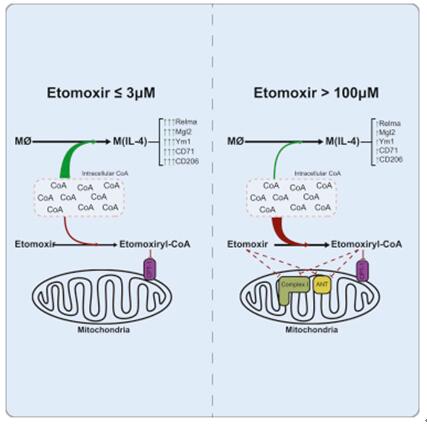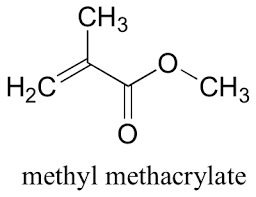Bioactivity of Etomoxir
Nov 7,2019

Etomoxir is a member of a family of substituted 2-oxirane-carboxylic acids that inhibit mitochondrial long-chain fatty acid β-oxidation (FAO), ketogenesis, and gluconeogenesis. Once converted to its CoA ester, etomoxir irreversibly binds to the CPT-1 catalytic site and prevents long chain fatty acids from entering the mitochondrion. This prevents the formation of acyl carnitines, a step that is necessary for the transport of fatty acyl chains from the cytosol into the intermembrane space of the mitochondria. This step is essential to the production of ATP from fatty acid oxidation. Etomoxir has also been identified as a direct agonist of PPARα. Along with this inhibition of FAO, etomoxir causes a shift in energy substrate utilization from fatty acids to glucose, leading to systemic hypoglycemia, hypoketonemia, and hypotriglyceridemia. These effects make etomoxir potentially useful in the treatment of noninsulin-dependent diabetes mellitus (NIDDM) [1].

A double-blind crossover study in human adult males showed that treatment with etomoxir enhanced feelings of hunger and increased meal portion size by 22%. Etomoxir has been reported to decrease the incorporation of palmitic acid and oleic acid into cardiolipin, although it does not affect the activities of cardiolipin biosynthesis and remodeling. Etomoxir also up-regulates uncoupling protein-3 mRNA levels in primary culture of rat preadipocytes. The long-term treatment with etomoxir improved functional capacity of pressure-overloaded left ventricle, which can be attributed to an enhanced myocardial performance. Chronic carnitine palmitoyltransferase-1 inhibition may thus represent a candidate approach for developing novel agents that are useful in the prevention of undesirable consequences of pressure overload–induced cardiac hypertrophy. [2]
Etomoxir is also an inhibitor of free fatty acid (FFA) oxidation-related key enzyme CPT1. P53 interacts directly with Bax, which is inhibited by Etomoxir, further confirming the direct interaction of P53 and Bax, and the involvement of FAO-mediated mitochondrial ROS generation in db/db mice[3]. Rats are injected daily with Etomoxir, a specific CPT-I inhibitor, for 8 days at 20 mg/kg of body mass. Etomoxir-treated rats display a 44% reduced cardiac CPT-I activity. The treatment of Lewis rats for 8 days with 20 mg/kg Etomoxir does not alter blood glucose, which is in line with comparable etomoxir-feeding studies. Similarly, Etomoxir feeding does not affect general growth characteristics such as gain in body mass, nor does it affect hindlimb muscle mass. However, heart mass and liver mass are both significantly increased by 11% in Etomoxir-treated rats[4].
References
1. Cabrero A, Alegret M, Sánchez R, Adzet T, Laguna JC, Vázquez M. Etomoxir, sodium 2-[6-(4-chlorophenoxy)hexyl]oxirane-2-carboxylate, up-regulates uncoupling protein-3 mRNA levels in primary culture of rat preadipocytes[J]. Biochemical and Biophysical Research Communications, 1999, 263(1):87-93.
2. Marian T, Heinz R. Etomoxir Improves Left Ventricular Performance of Pressure-Overloaded Rat Heart[J], Circulation, 1997, 96:3681–3686
3. Li J, et al. FFA-ROS-P53-mediated mitochondrial apoptosis contributes to reduction of osteoblastogenesis and bone mass in type 2 diabetes mellitus[J]. Scientific Reports, 2015, 5:12724.
4. Luiken JJ, et al. Etomoxir-induced partial carnitine palmitoyltransferase-I (CPT-I) inhibition in vivo does not alter cardiac long-chain fatty acid uptake and oxidation rates[J]. Biochemical Journal, 2009,419(2):447-55.
- Related articles
- Related Qustion
Tris is an established basimetric standard and buffer used in biochemistry and molecular biology. It may be used by itself as a buffer or as a component of mixed buffer formulations.....
Nov 7,2019Chemical ReagentsMethyl methacrylate monomer, N,N-dimethylp-toluidine (DMPT), as the accelerator of polymerization reaction and hydroquinone as an inhibitor of that reaction. There are some alternate plain acrylic bone cements, which have been developed to....
Nov 7,2019Organic Chemistry





